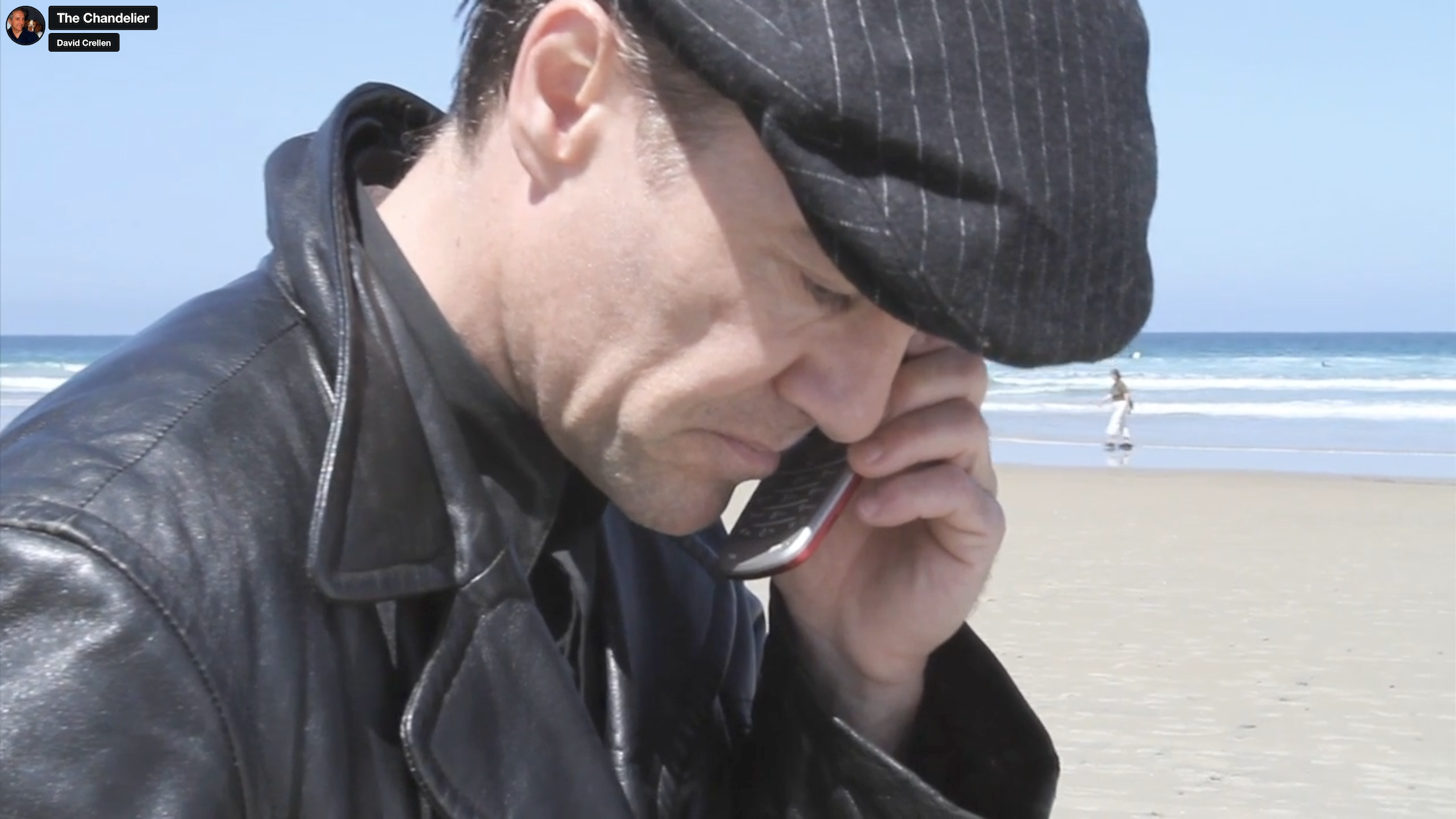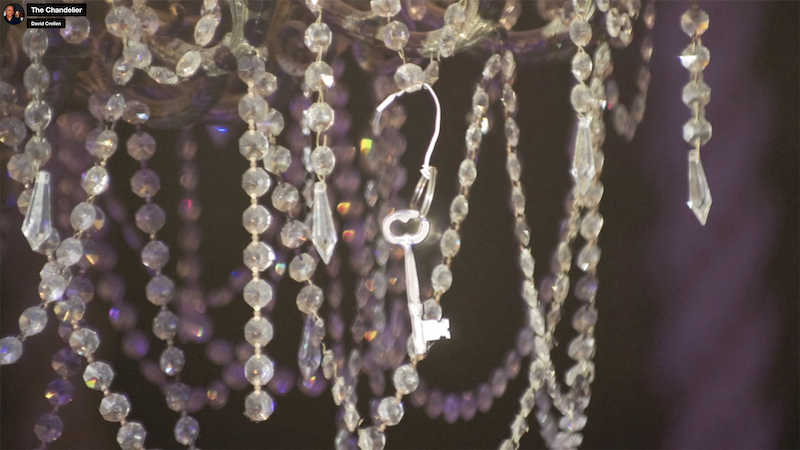The Chandelier – An original film

THE STORY BEYOND THE STILL – A remarkable filmmaking contest created by Canon Camera. It was designed to introduce the world to the newest ability of a digital still camera capable of making Hollywood-class HD films. Each of the 7 chapters began with a provocative still image with which the previous chapter ended.
Millions worldwide eagerly participated in the contest, which was eventually exhibited at the Sundance Film Festival and submitted to the Oscars. Each chapter can be no longer than 4 minutes.
I jumped in to compete with Chapter 4. Unfortunately, my submission was not selected, but the jury of Hollywood professionals gave me great kudos. But we all had great fun and tremendous stress and learned a lot.
 The storyline begins (chapter 1) with a cab driver who drops a fare at an airport only to find a teddy bear on the sidewalk. That night he places it on his sleeping daughter's bed. When she awakens in the morning, she is pleasantly surprised to find the teddy bear. While playing, she discovers an antique key buried within the teddy bear's stuffing. The chapter ends with a closing still shot revealing an old steamer trunk in a warehouse.
The storyline begins (chapter 1) with a cab driver who drops a fare at an airport only to find a teddy bear on the sidewalk. That night he places it on his sleeping daughter's bed. When she awakens in the morning, she is pleasantly surprised to find the teddy bear. While playing, she discovers an antique key buried within the teddy bear's stuffing. The chapter ends with a closing still shot revealing an old steamer trunk in a warehouse.
Chapters 2 and 3 start at the warehouse, where night watchmen see a disturbance as a burglar drags the trunk into his pickup. The burglar strangles one watchman while the other sneaks into the burglar's truck bed. While driving away, the burglar stops for gas. This is where the original cabbie is refueling - an exciting twist, including the antique key, now attached to the cabbie's keyring (the still of chapter 2 & 3 transition).
 After a lengthy drive, the entourage ends at a suburban house. It is now well after midnight. The watchman is shot while attempting to enter the house. The watchman quickly escapes into the cab and has the driver follow the truck. Meanwhile, while looking in his wallet at his daughter's photo, the waiting cabbie hears the shot and looks up to see two badmen running after him. He panics and peels away from the scene. The two men approach the spot where the cab was and find the cabbie's wallet, which he dropped in panic.
After a lengthy drive, the entourage ends at a suburban house. It is now well after midnight. The watchman is shot while attempting to enter the house. The watchman quickly escapes into the cab and has the driver follow the truck. Meanwhile, while looking in his wallet at his daughter's photo, the waiting cabbie hears the shot and looks up to see two badmen running after him. He panics and peels away from the scene. The two men approach the spot where the cab was and find the cabbie's wallet, which he dropped in panic.
The closing scene is of a badman's feet …
This is where I come in with my version of Chapter 4's plot - - Watch it in full screen to best enjoy the story.
When I shared my idea for a storyline with my friend, theatrical director, and songwriter Ric Henry, he jumped on it. "If we wrap the prior plot clues around a song, it would be an exciting way to advance the story."
We wanted to steer the story to a less violent, more endearing experience. We incorporated Ric's and my wife, Karen Giorgio's musical talents to produce an entirely different segment type. Thanks to the talented Alfred Rutz and his daughter Victoria along with the impact of Malcolm Vinje's presence and the patient cast of extras, we ended up with that special, endearing effect. (Note: the most violent submissions won the higher positions.)
I filmed all but one scene with a rented Canon EOS 7D with a complete set of EOS lenses I own from my 35mm film days. I shot the opening scene with a Canon HV20 camcorder, a great HD consumer camera.
The filming locations were my garage "green screen sound stage," La Jolla Shores beach, and San Diego's wonderfully magical and exotic Tango del Ray night club, owned by our friend, Tom Warren.
Thanks to everyone involved for their time and talent. PS: The bear was a bit of a diva, but she was fine once we got her in her own trailer.
The Credits:
Produced by - David Crellen
Director and Photographer - David Crellen
Assistant Director - Ric Henry
Screen Play - David Crellen, Ric Henry
Video and audio editing by David Crellen
Original Song "Don't Take My Heart" written and composed by Ric Henry
Performed by:
Ric Henry, Karen Giorgio - vocals
Evan Crone - Piano
Ric Henry - Bongos
The Cast:
Cabbie - Alfred Rutz
Cabbie's Daughter - Victoria Rutz
Bad Guy 1 - Malcolm Vinje
Bad Guy 2 - Trayfen O'Donnell
Club Morocco Singers Ric Henry Karen Giorgio
Club Audience
Michie Vinje
Janet Kaveney
Alan Land
Mona Hanes
Tim Moore
by David Crellen — 2010
Medium: 35mm Digital

Please leave a comment …
Add a comment